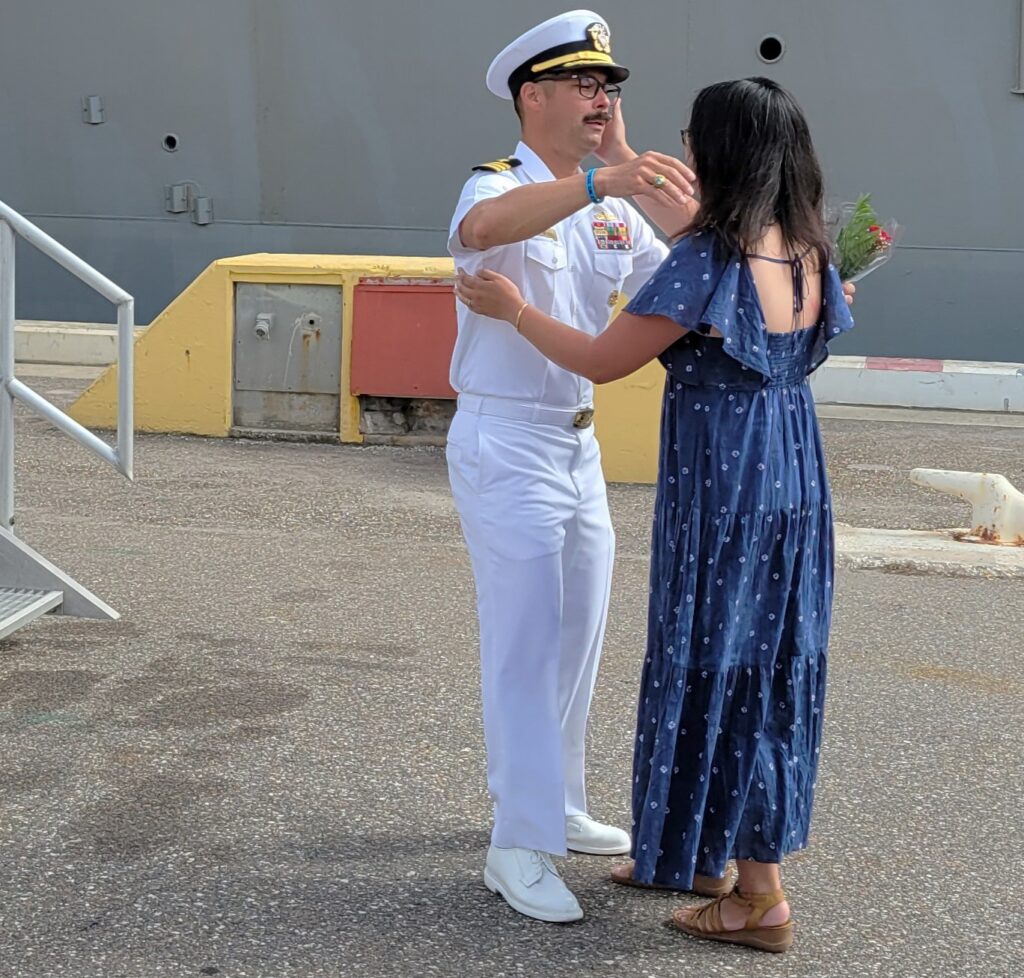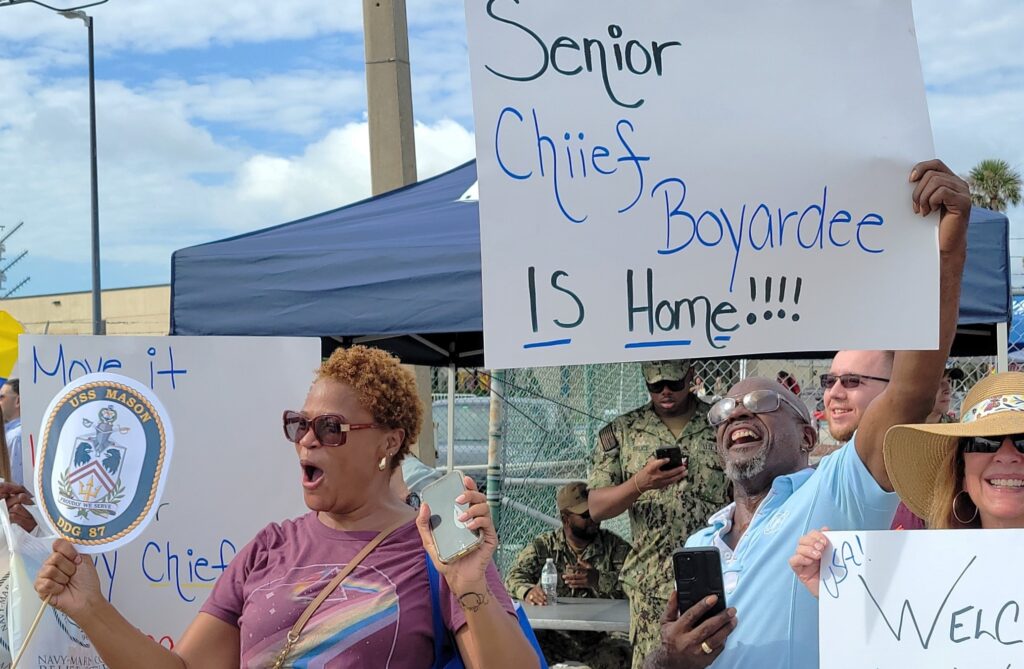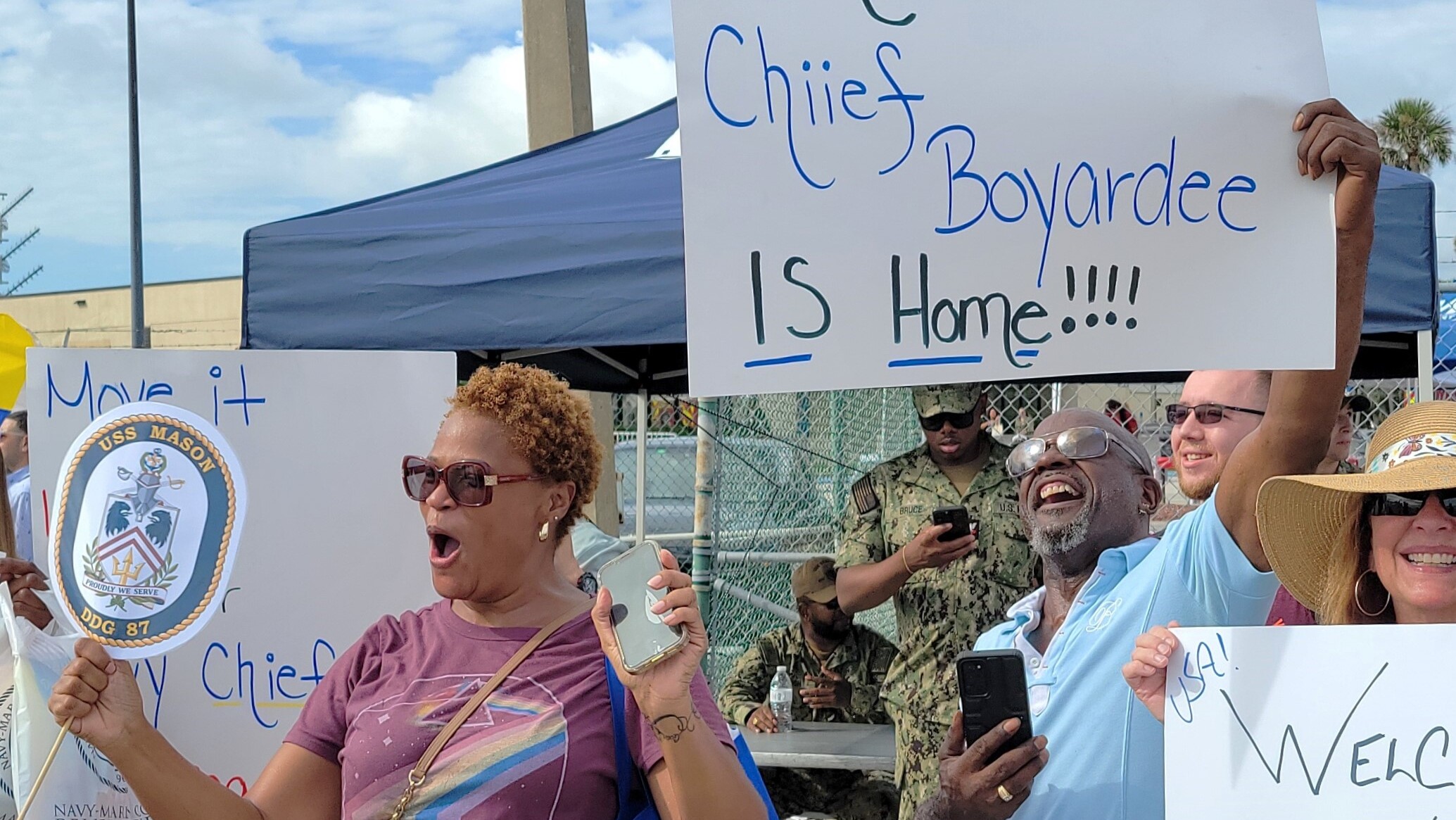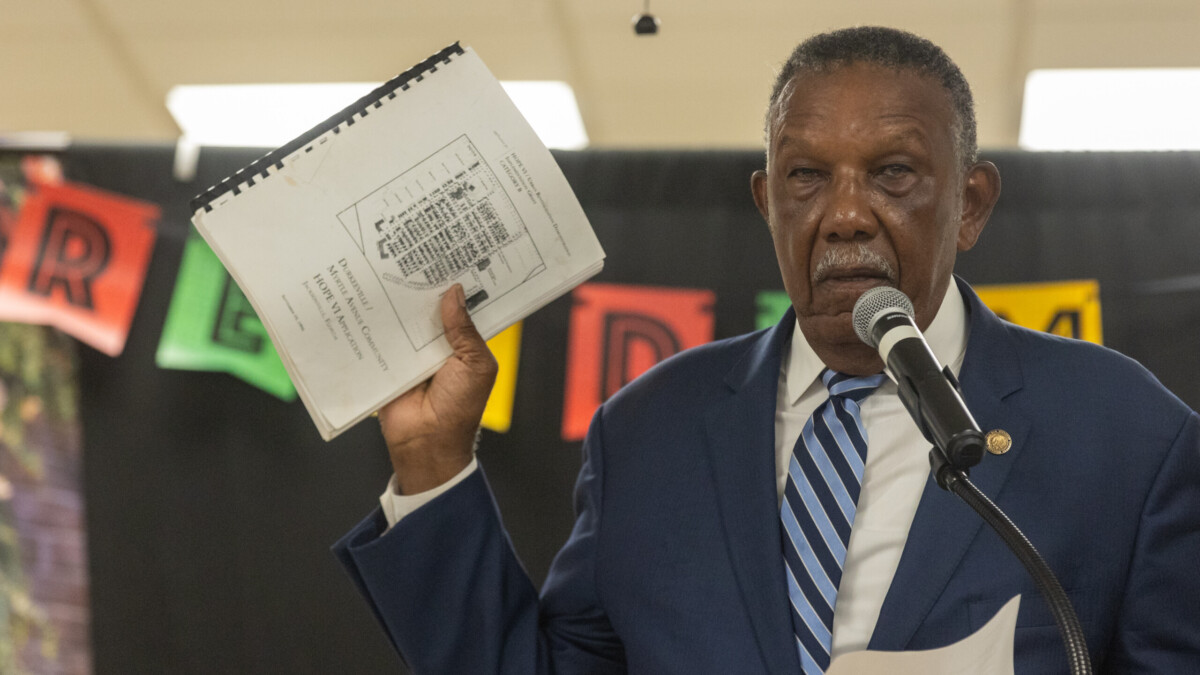Patrick Mason waved one of hundreds of signs lining the dock at Naval Station Mayport on Tuesday, waiting in the hot sun as the U.S.S. Mason pulled into port after a 9-month deployment.
But “thrilled” as he is that his brother, Seaman Brendan Mason, and 350 others on board the U.S.S. Mason are home safe, Patrick said he knows that the cruise through the Red Sea was no simple deployment.
The ship was targeted by Yemen’s Houthi rebels and Iranian missiles while on patrol with a carrier task force. It also stopped Houthi-launched cruise and anti-ship ballistic missiles coming its way, as well as destroying 22 Houthi targets in Yemen during defensive strikes,the Navy said.
“A lot of stuff happened over there from what I hear, so it is a blessing and an honor to see him come in,” said Patrick Mason, who said his brother gets kidded for having the same last name as his ship. “That’s a long time, especially being on the water and all you see is ocean for months at a time, then pull into a port or three or four days, then back open again. I am sure he’s happy to be back.”
Commander Justin Smith said that he led the crew of the 9,700-ton ship through defense of those attacks, plus safely escorting 26 merchant ships, capturing five pirates and freeing 26 of their prisoners, and destroying 46 drones He and members of the Dwight D. Eisenhower Carrier Strike Group saw some of the most intense maritime fighting the U.S. Navy has been involved in for 70 years, and he called their mission “unprecedented.”
“It’s been absolutely amazing watching this warm homecoming take place this morning, and to be able to see those sailors rejoin friends, family and loved ones, and a lot to share with them,” said Smith after his wife, Van Ngyen Smith, greeted him as he came off the destroyer.

“There’s a select few of us that have that distinct privilege and honor to say that we are truly battle tested and battle proven,” Smith added. “My crew has sustained, and been extremely resilient through the entire eight and a half-plus months of deployment, operating inside a weapons engagement zone and able to maintain that unprecedented combat condition unseen since World War II.”
The Arleigh Burke-class destroyer officially began service exactly 33 years ago – July 4, 1991. Powered by four gas turbines punching out a combined 100,000 shaft horsepower, the destroyer can do more than 30 knots, the Navy said. It carries Tomahawk, Penguin/Hellfire and Sparrow missiles;, MK-46 torpedoes and a Phalanx gun system to destroy incoming missiles and drones. Its aft hangar carries two helicopters, also armed with missiles and torpedoes.
The ship was operating in the U.S. 5th and 6th Fleet areas of operations as Houthi rebels began attacking and boarding cargo ships to pressure Israel to end its war against Hamas in Gaza, according to the Associated Press. As of last month, the rebels have targeted more than 60 vessels with missiles and drones, killing four sailors and disrupting commerce through the Suez Canal. And since January, the U.S.-led campaign has targeted the Houthis in response, the AP said.
In mid-May, Houthi rebels claimed they had targeted the U.S.S. Mason with missiles, and launched an attack on a commercial ship, the Navy Times said. At the same time, the Navy confirmed that the Mason “destroyed one inbound anti-ship ballistic missile launched by (the) Iranian-backed Houthis from Yemen over the Red Sea,” the AP reported. Smith confirmed his crew stopped five missiles and five more drones during their cruise,
Hundreds of crew family members waited on the dock on Tuesday morning for their son, daughter, father or mother to return home. Many waved U.S. flags of signs welcoming someone home, one woman wearing a “Navy Grandma” t-shirt as someone else waited in an inflatable unicorn costume. And as they waited, members of Navy Band Southeast played music, including a salsa version of God Bless America.”

For Calvin Edwards, cheering as he waved a “Senior Chief Boyardee is Home!!!!” sign, it was great to have his brother-in-law back. The Chicago man said he knows how busy Senior Chief Jimmy McMullen – his real name – was as the ship’s crew fought and repelled rebels.
“I am blessed to have him come home, and for all those who are coming home safe, I am blessed for them to be back safe,” Edwards said. “… We are proud of them.”
Crewmembers lined the rails as the Mason docked, some wearing hard hats shaped like cowboy hats as the destroyer’s huge battle flag – crossed swords flanked by mythical griffins – flew overhead. When the gangway was hooked up, they began to climb down, some carrying flowers to present to spouses or significant others. And happily greeting family in the gangway’s shadow was Culinary Specialist Harriett Pokuaa, originally from Ghana in West Africa and happy to be home after a very active cruise.
“I don’t know how I feel. I am just excited to be home and see my family,” she said. “Yes, I am really proud and I feel good that w are all here safe.”
While no one on board was injured in the deployments or attacks, the ship did suffer a tragedy.
A sailor was reported missing at sea on March 20 while conducting operations in the Red Sea., and was not found despite search and recovery operations, Smith said.
“It was difficult on the crew to lose one of our own,” he said. “. But I think we turned to each other fo that support, and it showed that connectiveness for each other, and I think we came out stronger, tougher and even better prepared for whatever is thrown in our direction.”
The strike group included the U.S.S. Dwight D. Eisenhower and its carrier air wing, as well as a guided missile cruiser and five destroyers.







